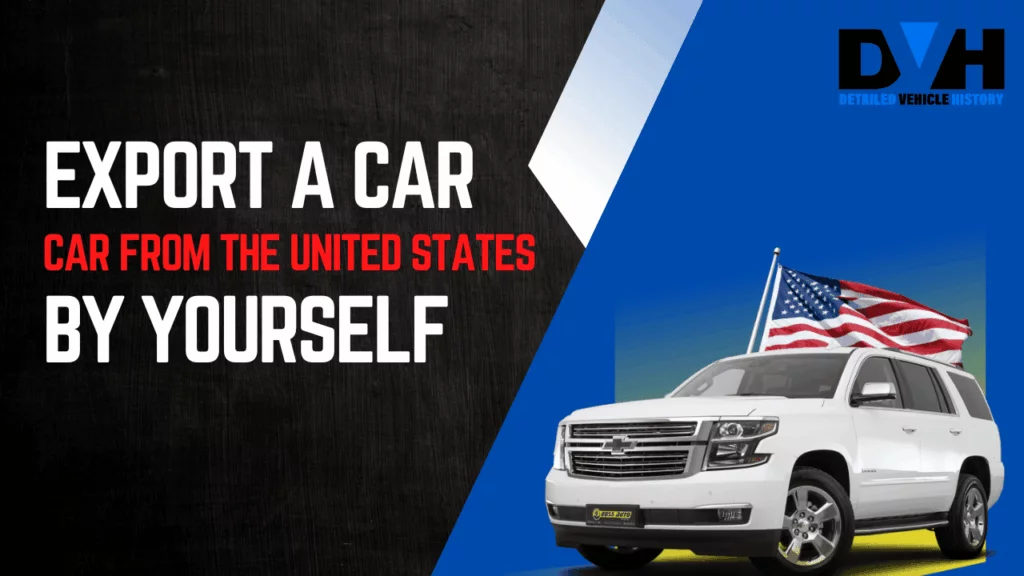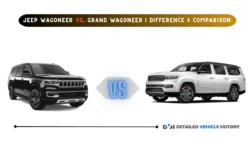Exporting a car from the United States on your own can save money and give you full control of the process. It’s more straightforward than most people think if you have the right documents and follow the proper steps.
This guide walks you through everything from paperwork to shipping options, and answers common questions along the way.
Required Documentation To Export Cars From the US
The first step to exporting a car from the United States is gathering all the necessary paperwork. Each document serves a specific purpose, ensuring your vehicle meets export requirements. Please complete all necessary paperwork to ensure timely exports.
MSO / MCO
If your car is brand new and has never been titled, you’ll need the Manufacturer’s Statement of Origin (MSO) or Manufacturer’s Certificate of Origin (MCO).
This document proves the vehicle is new and has not yet been registered. It’s often provided by the dealership when you buy a new car. If you’ve lost it, the dealer or manufacturer may be able to issue a replacement.
You’ll need to present the original MSO or MCO to U.S. Customs before export.
Certificate of Title
For used vehicles, the Certificate of Title is the key document. It shows you legally own the car and are allowed to export it. You need to make sure the title is in your name. If someone else is listed, you’ll need extra documentation proving the transfer of ownership.
Some states offer electronic titles. If that’s the case, contact your local DMV for a printed copy before export.
READ ALSO: American Used Cars for Export to Jamaica: Step-by-Step Guide
Bill of Sale
The Bill of Sale provides proof of the vehicle transaction. It includes the buyer and seller names, vehicle details, price, and date of sale.Even if you’re exporting your own car, customs still expects to see this document. It shows the vehicle wasn’t stolen or sold illegally.
You would need to keep several copies as you may be required to provide one to both U.S. and foreign customs.
Lien Release Documents
If you’ve ever had a loan on the vehicle, make sure it’s paid off. Then get a Lien Release from the lender. This document proves there are no outstanding debts tied to the car. Without it, U.S. Customs will block the export. Even if the lien is cleared and your title shows “no lien,” some ports still ask for a written release from the bank. It’s always safer to have it in hand.
Vehicle History Report
While not legally required by U.S. Customs, a Vehicle History Report is a smart document to include, especially if you’re exporting the car for sale or to register it in another country.
This report shows the car’s full background. It shows accident records, mileage rollbacks, theft records, open recalls, damages, ownership history, previous use (like rental or taxi), lien and loan records. Many countries require this type of report for registration, so having it on hand can prevent delays once the vehicle arrives.
Get a VIN check now to get a vehicle history report instantly.
READ ALSO: Export Cars from USA to Lebanon – American Used Cars for Export

Can I Export a Financed Car?
You usually can’t export a car that’s still financed. The lender technically owns the vehicle until the loan is paid off.
To export the car, you must either:
- Pay off the loan in full
- Get written permission from the lender, which is rare.
Even if the lender agrees, they’ll likely place strict conditions on the export. For most people, it’s best to wait until the loan is cleared. Always double-check the title and financing status before making export plans.
Just to be on the safe side, ensure to get a lien check. It’s a fast way to make sure everything is clear before you head to the port.
What is the Automated Export System (AES)?
The Automated Export System (AES) is the electronic platform where export information is filed with US Customs and Border Protection (CBP). If your car’s value exceeds $2,500 or requires an export license, filing in AES is mandatory.
To use AES, you must file an Electronic Export Information (EEI) form. This includes the car’s VIN, value, and destination country. You’ll need to file the EEI through a system called ACE (Automated Commercial Environment) at least 72 hours before shipping.
Most people hire a freight forwarder or customs broker to handle AES filing. If you want to do it yourself, you’ll need to register for an account and get approved to file.
It sounds technical, but it’s manageable with the right guidance.
Can I Export a Car From the US While I Am in Another Country?
Yes, you can export a car from the US while residing abroad, but coordination is key. You’ll need a trusted representative or export company to handle documentation, customs filings, and shipping.
Yes, you can export a car even if you’re not in the U.S. but it takes planning. First, assign someone in the U.S. as your authorized agent. They’ll handle the paperwork and coordinate with U.S. Customs for you. You must give them written permission to act on your behalf. Some ports also require notarized documents or power of attorney.
All documents like title, bill of sale, and AES filing still need to be filed under your name, even if someone else is managing it locally. Remote exporting is common and works well with proper preparation. Just make sure your agent is someone you trust.
READ ALSO: Importing Quality American Used Cars from the USA to Oman
Conclusion
Exporting a car from the United States on your own may seem overwhelming, but it’s entirely doable with the right preparation. When you have the proper documents, follow the filing steps, and understand customs requirements, the process becomes much smoother.
Before you get started, make sure your title is clear, your paperwork is in order, and your vehicle is ready to go. And if you need a lien check or a vehicle history report, Detailed Vehicle History makes it easy to get the information you need fast.
Should I ship a car by myself or use a shipping company?
Shipping a car yourself is possible but challenging due to the logistics of filing paperwork, arranging transport, and complying with customs regulations. Professional shipping companies streamline the process by handling AES filings, customs clearances, and transport logistics.
What kind of transport is available?
Cars can be shipped using containerized or roll-on/roll-off (RoRo) methods. Containers are more secure but costly, while RoRo services are affordable and suitable for operational vehicles. Deciding between these options depends on the car’s value, condition, and destination.
How do I insure a vehicle that is being shipped?
Your regular car insurance won’t cover export shipments. Instead, you’ll need marine insurance, which protects against damages during transport. Many shipping companies offer this service as part of their package, but verifying coverage through an insurance provider is wise.
How long does processing take?
Processing times vary based on the port and destination. On average, customs clearance takes 2-5 business days, provided all documents are in order.
How long does shipping take?
Shipping duration depends on the destination and chosen method. For instance, RoRo shipping to Europe typically takes 10-14 days, while container shipping to Asia might take 4-6 weeks.









